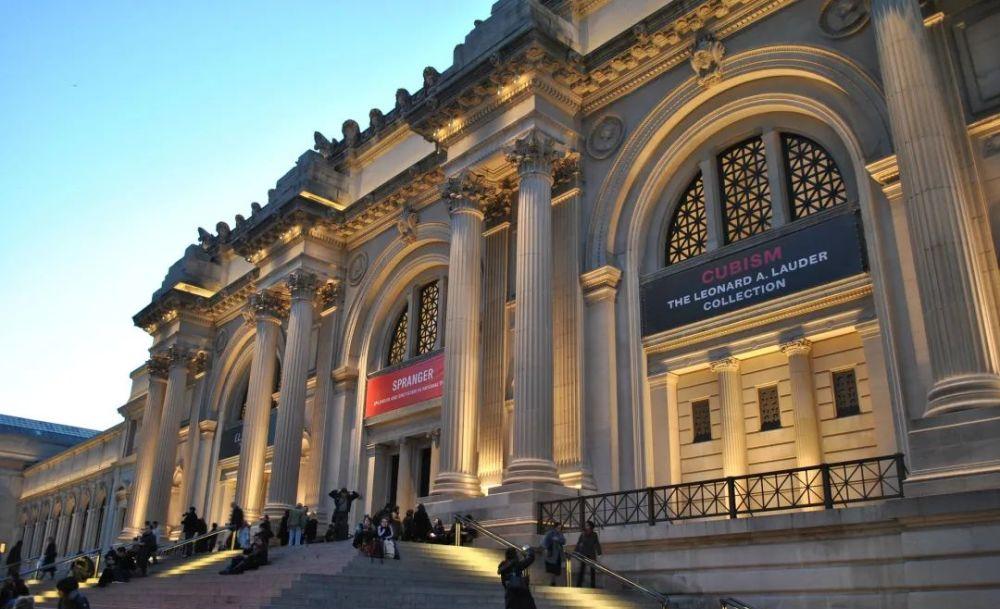The Metropolitan Museum of Art (nicknamed The Met) is located next to Central Park in Manhattan, New York, New York, USA, and is ranked as one of the world's three largest museums alongside the Louvre Museum in France and the British Museum in the United Kingdom, and is also one of the most visited art museums in the world. Its main building covers an area of 8 hectares and the exhibition area exceeds 20 hectares. With over two million works of art and artifacts, the collection is all-encompassing.

Museum hall
Opened on 20 February 1872, the Metropolitan Museum of Art is a hundred years old and has as many as 19 departments by category due to its large collection. Personally, I particularly like the Met's Weapon Armor Department. Among the more than 15,000 artifacts here, it is particularly famous for its European masterpieces from the late Middle Ages to the Renaissance, as well as a large number of Japanese swords and Japanese samurai armor. It also includes Egypt, the Ancient Greece, the Roman Empire, the Ancient Near East, Africa, Oceania and the Americas, as well as American firearms from the 19th and 20th centuries (especially the famous Colt). The time covers the 4th to 19th centuries BC. Many of the star collections in the Hall of Arms and Armor have historically been owned by some well-known figures, such as King Henry VIII of England, King Henry II of France, and Holy Roman Emperor Ferdinand I.
In the center of this year's rearranged Hall of Weapons and Armor is the bronze cannon of King Henry II of France
Although the Metropolitan Museum of Art is mostly publicly exhibited in the Metropolitan Museum of Art from European Christian countries, it actually has some special town treasures, such as the following royal lock armor of the Mamluk Burji Sultan Cataba of Egypt.
Mamluk (also translated as Mamluk), which means "slave", was first purchased by the Arab caliph of Baghdad from slave traders in the 9th century. Because they were not natives and had no political roots, they gained the favor of the rulers and became the caliph's Janissaries. After Saladin established the Ayyubid dynasty, he continued to reuse the Mamluk army to further strengthen it. In 1260, the Battle of Ain Zarut, which changed the course of the history of the Middle East, was the Mongol Western Expedition on one side, and the main force on the other side was the Egyptian Mamluks, and in the end, the "slave soldiers" defeated the Mongols and became famous in the First World War. After the war, Mamluk officers formally ended the rule of Saladin's descendants through a coup d'état and established their own Mamluk dynasty (the Bebhiri dynasty with chincha Turks as the core, and the Borgh dynasty with the Caucasians as the core in the later period). The Mamluk soldiers received harsh training from an early age, took combat as their duty, and before the rise of the new Turkish army, they were the most powerful force in the Islamic regime in the Mediterranean, and the Mamluk Sultanate was also a powerful power in the eastern Mediterranean.
Mamluk cavalry at the Battle of Ainzalut
Mamluk cavalry
Flag of the Mamluk Sultanate
Al-Ashraf Sayf ad-Din Qaitbay (1416/1418-1496) was the eighteenth sultan of the Mamluk Burji dynasty of Egypt and one of the longest-reigning Egyptian sultans. During his reign, he made great efforts to govern, and wenzhi martial arts were quite accomplished. He was an avid lover of art and architecture, and many of the works built during his reign still stand in Saudi Arabia, Egypt, Syria and Israel.
The Venetian mission came to Damascus under the Mamluks, with the coat of arms of Caterba on the back wall
As the head of a nation, Catbar certainly did not need to personally kill the enemy himself, and his weapons and armor were mainly used for ceremonial purposes. But after all, Cataba was a Mamluk sultan from a professional military clique, and naturally attached great importance to his royal weapons and armor, and kept improving. The armor of the Mamluk sultans is extremely rare to this day. This lock armor for The Sultan of Cataba is 78.7 cm long and weighs 11.41 kg. Its most distinctive features are the 87 plates attached to the chain armor and the exquisite and original gilded decoration. It stands out among the Islamic armor preserved from the 15th and 16th centuries. The overall structure of the lock armor follows the Islamic tradition, wrapping around the neck, arms and hips, and several rows of plate armor in parallel protect the most vulnerable parts of the body. The 87 plate armor is arranged vertically in 9 columns, each carefully cut, perfectly fits the human torso, and can adapt to the movement of the limbs, which indeed reflects the outstanding level of craftsmanship.
Unlike Western plate armor, the plate armor part of this set of Islamic armor did not use the relief process, but replaced it with a gilded process. Many netizens may be puzzled by the lack of the complex patterns on the armor of the Western nobility of the same period - the armor of Western aristocratic monarchs is often even engraved with ancient Greco-Roman mythology or the deeds of famous heroes (such as Alexander the Great). This is due to the influence of the doctrine, can not be "idolatry", but can only be decorated with plants and flowers, abstract symbols and Egyptian calligraphy, etc., but very distinctive.
One of the plates reads in Suluth (also known as the Trinity, a font of Islamic calligraphy): "Honor bequeathed to our Sultan, our Lord, King of Kings, Wise One, Ruler, Righteous Ashraf Saif Adin Cataba, Protector of Islam." "This highlights the royal identity and historical significance of the armor.
Photo and text shared from: asherhoa
Leave a message in the lower right corner and see which cold weapon you like!